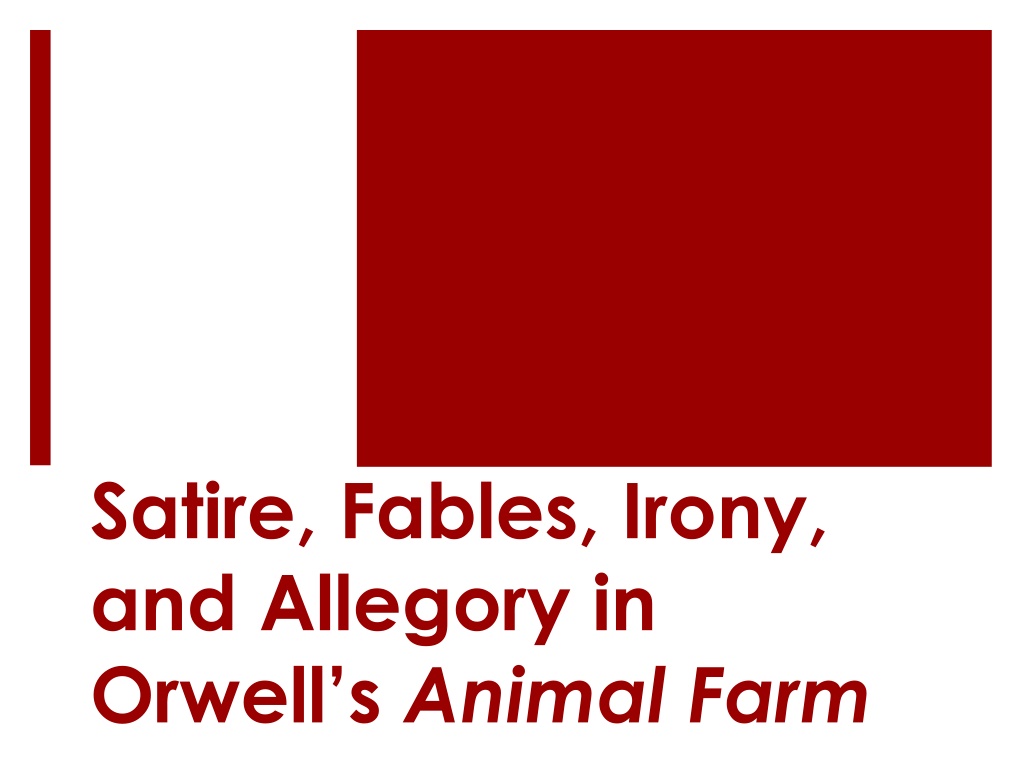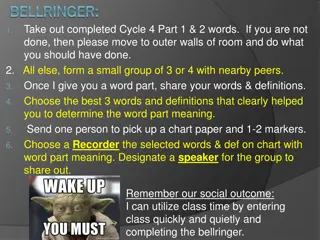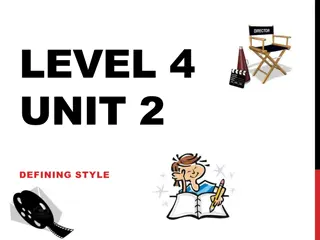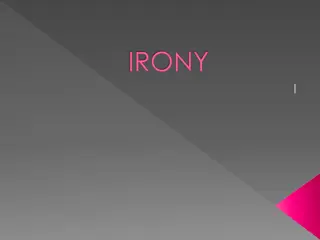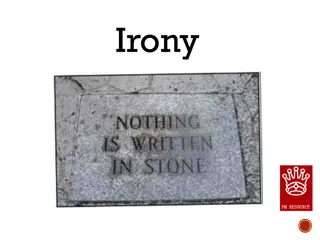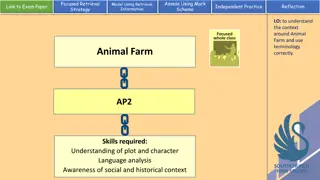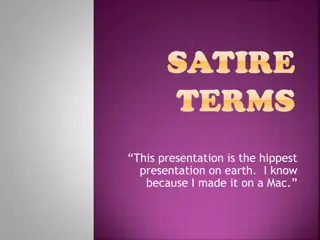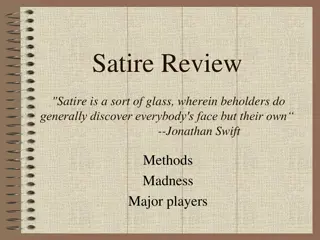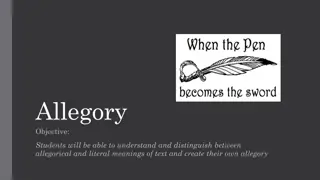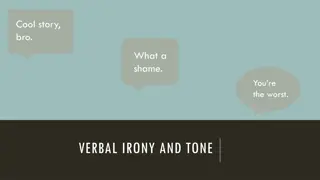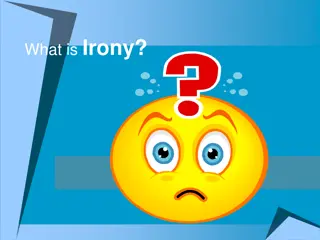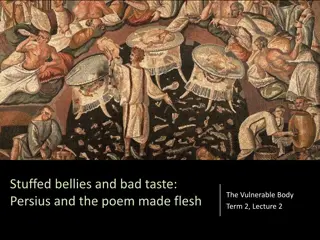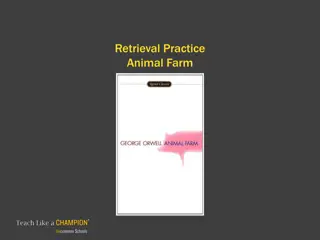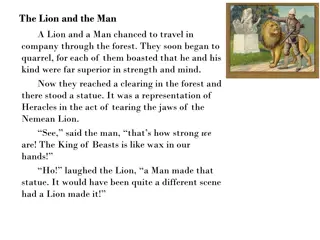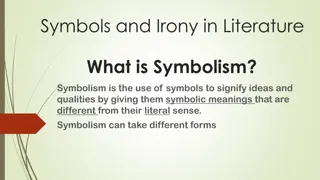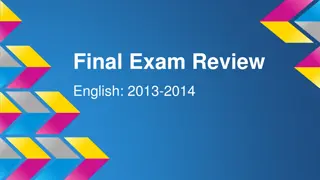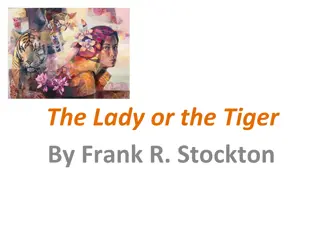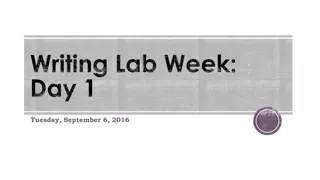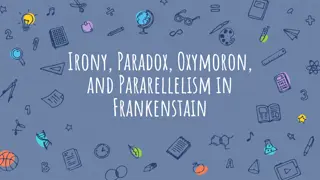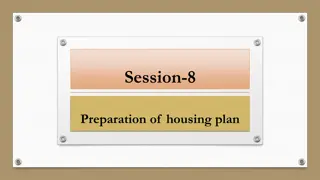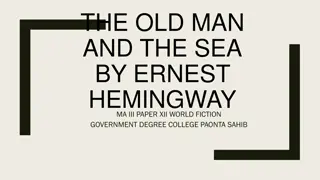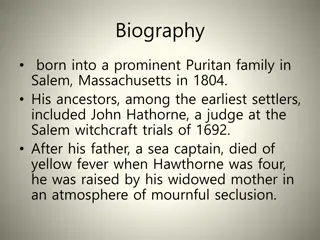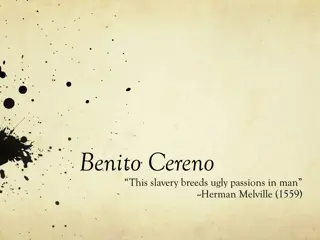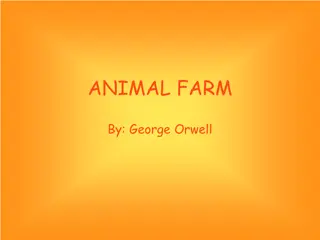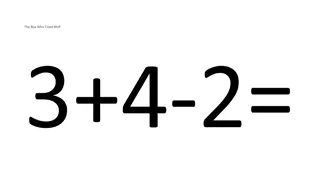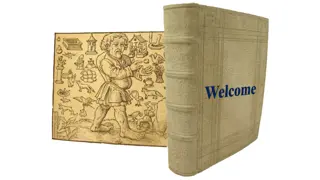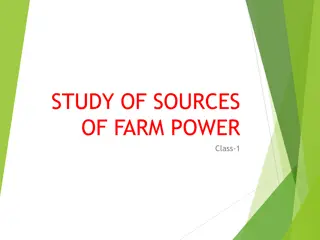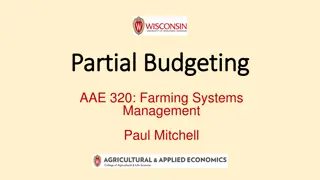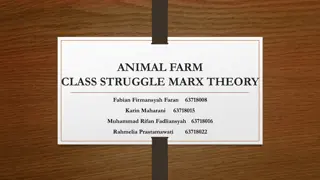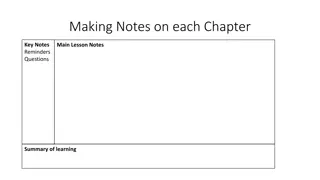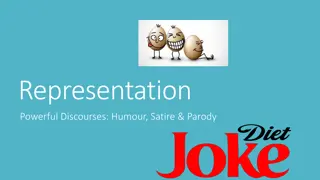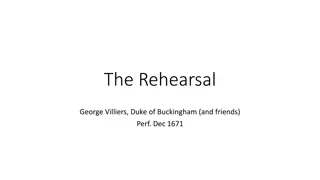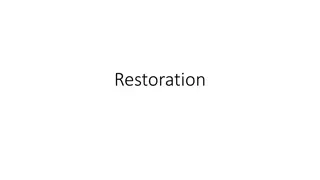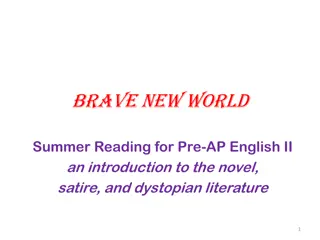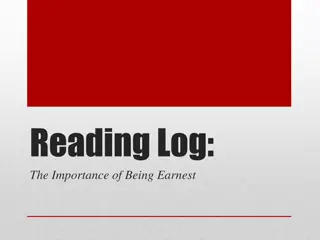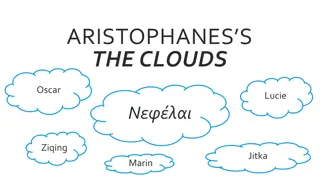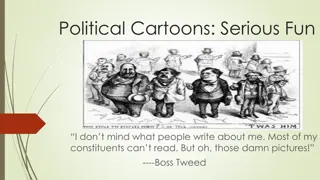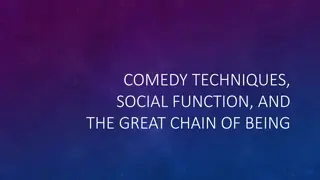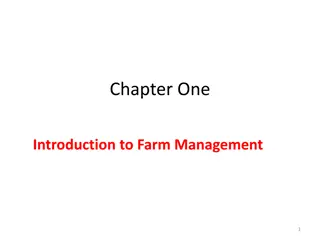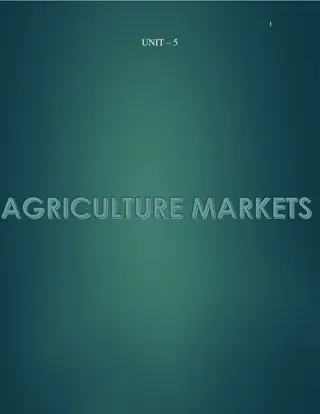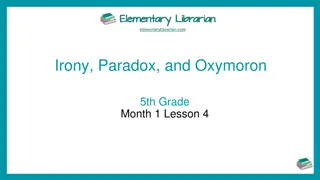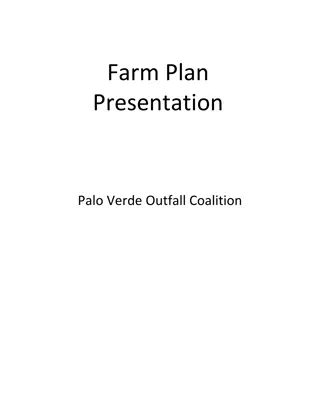Understanding Satire, Fables, Irony, and Allegory in Orwell's Animal Farm
Satire, fables, irony, and allegory play crucial roles in literature like Orwell's Animal Farm. Satire ridicules societal vices, fables convey morals through stories, irony provides contradiction, and allegory deepens meanings. Through examples and explanations, these literary devices are explored and understood in this insightful content.
Uploaded on Oct 01, 2024 | 0 Views
Download Presentation

Please find below an Image/Link to download the presentation.
The content on the website is provided AS IS for your information and personal use only. It may not be sold, licensed, or shared on other websites without obtaining consent from the author. Download presentation by click this link. If you encounter any issues during the download, it is possible that the publisher has removed the file from their server.
E N D
Presentation Transcript
Satire, Fables, Irony, and Allegory in Orwell s Animal Farm
Satire A writer attacks a serious issue by presenting it in a ridiculous light and otherwise poking fun at it.
Role of Satire The role of satire is to ridicule or criticize those vices in the society, which the writer considers a threat to civilization. The writer considers it his obligation to expose these vices for the betterment of humanity. Therefore, the function of satire is not to make others laugh at persons or ideas they make fun of. It intends to warn the public and to change their opinions about the prevailing corruption/conditions in society.
For example: Some shows on television are satire examples like The Daily Show, The Colbert Report, and The Larry Sanders Show. These shows claim to target what they think are stupid political and social viewpoints.
Fable A short story, typically with animals as characters, conveying a moral.
For example: For example, the story of The Grasshopper and the Ant compares the hardworking ant and the lazy grasshopper. The ant saves up food for the winter months, while the grasshopper plays. Instead of directly telling people bad things will happen to you if you don't work hard and plan for the future, the fable veils the message just enough to make the lesson more palatable.
Irony A figure of speech. A contradiction of expectation between what is said and what is meant. Often connected to a fatalistic or pessimistic view of life.
Types of Irony Verbal: the use of words to mean something different from what a person actually says. Overstatement when a person exaggerates the character of something. Understatement when a person undermines the character of something. Situation: involves a discrepancy between what is expected to happen and what actually happens. Dramatic: occurs when the audience is aware of something that the characters in the story are not aware of
Verbal Irony Used by a speaker intentionally. It occurs in a conversation where a person aims to be understood as meaning something different to what his or her words literally mean. Examples of verbal irony include: Thanks for the ticket officer you just made my day! I can t wait to read the seven hundred page report.
Situation Irony Situation irony occurs when the exact opposite of what is meant to happen, happens. For example: someone buys a gun to protect himself, but the same gun is used by another individual to injure him. One would expect that the gun would keep him safe, but it has actually caused him injury.
Situation Irony There is however a difference between situation irony and coincidence or bad luck. When someone washes his car and it rains, that is just bad luck; nothing led him or her to think that it would not rain. However, when a TV weather presenter gets caught in an unexpected storm, it is ironic because he or she is expected to know the exact weather changes. For situation irony to occur there has to be something that leads a person to think that a particular event or situation is unlikely happen.
Dramatic Irony For example: In a movie where a detective does not know that the criminal responsible for the crimes in the city is his partner. The audience however is already aware of this fact and waits anxiously to know what will happen once the character finds out what they already know.
Allegory a story, poem, or picture that can be interpreted to reveal a hidden meaning, typically a moral or political one
Allegory Allegories are similar to metaphors: in both the author uses one subject to represent another, seemingly unrelated, subject. However, unlike metaphors, which are generally short and contained within a few lines, an allegory extends its representation over the course of an entire story, novel, or poem.
For example: Edgar Allan Poe The Masque of the Red Death: The story can be read as an allegory how no one can evade death. John Bunyan The Pilgrim's Progress: The journey of the protagonists Christian and Evangelist symbolizes the ascension of the soul from earth to Heaven.
Think about it! In your notes, answer the following question in the APE format: If an allegory is a figurative representation conveying a meaning other than and in addition to the literal, then what is the additional or alternative meaning contained in Orwell s story of animal rebellion? How do you know?
